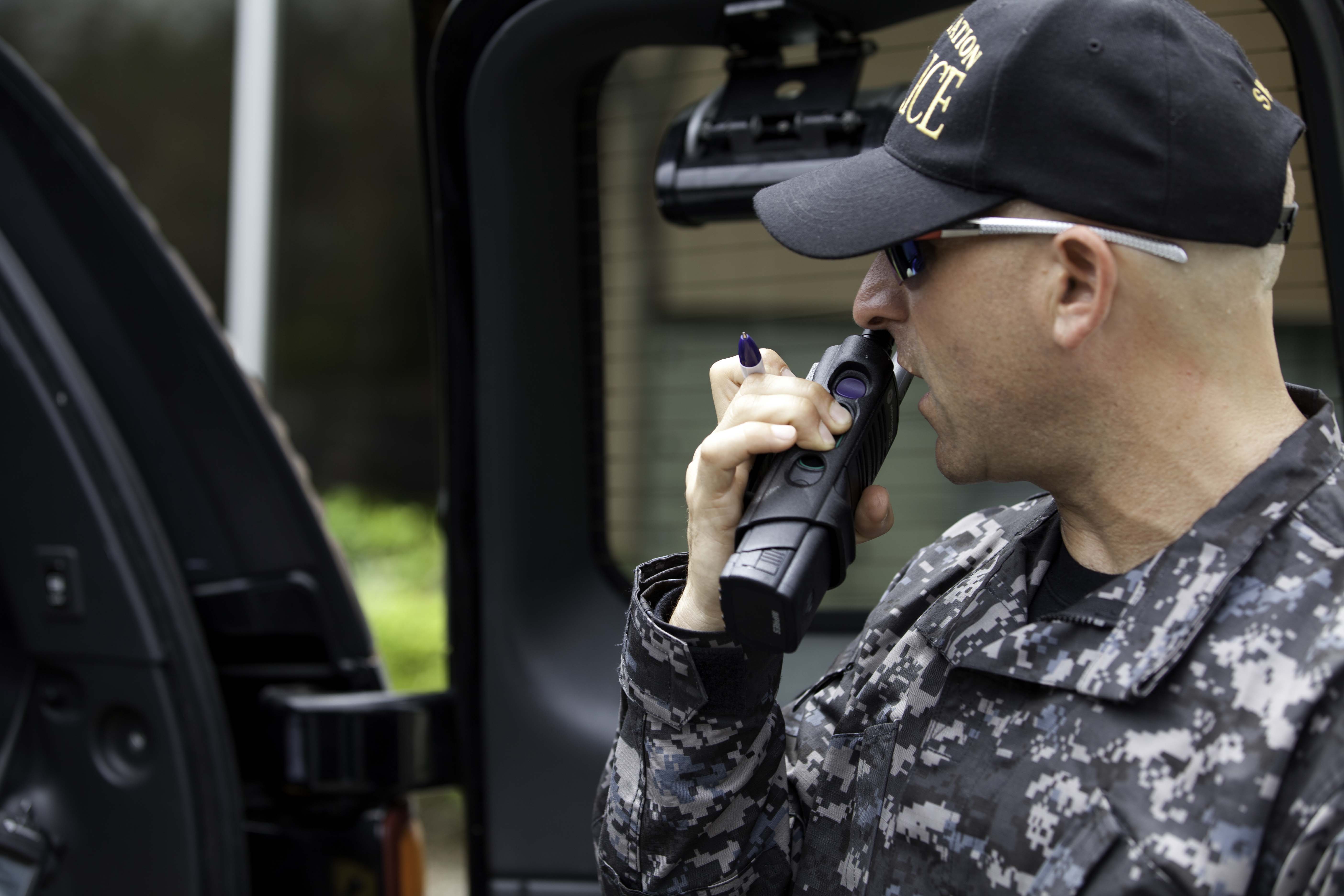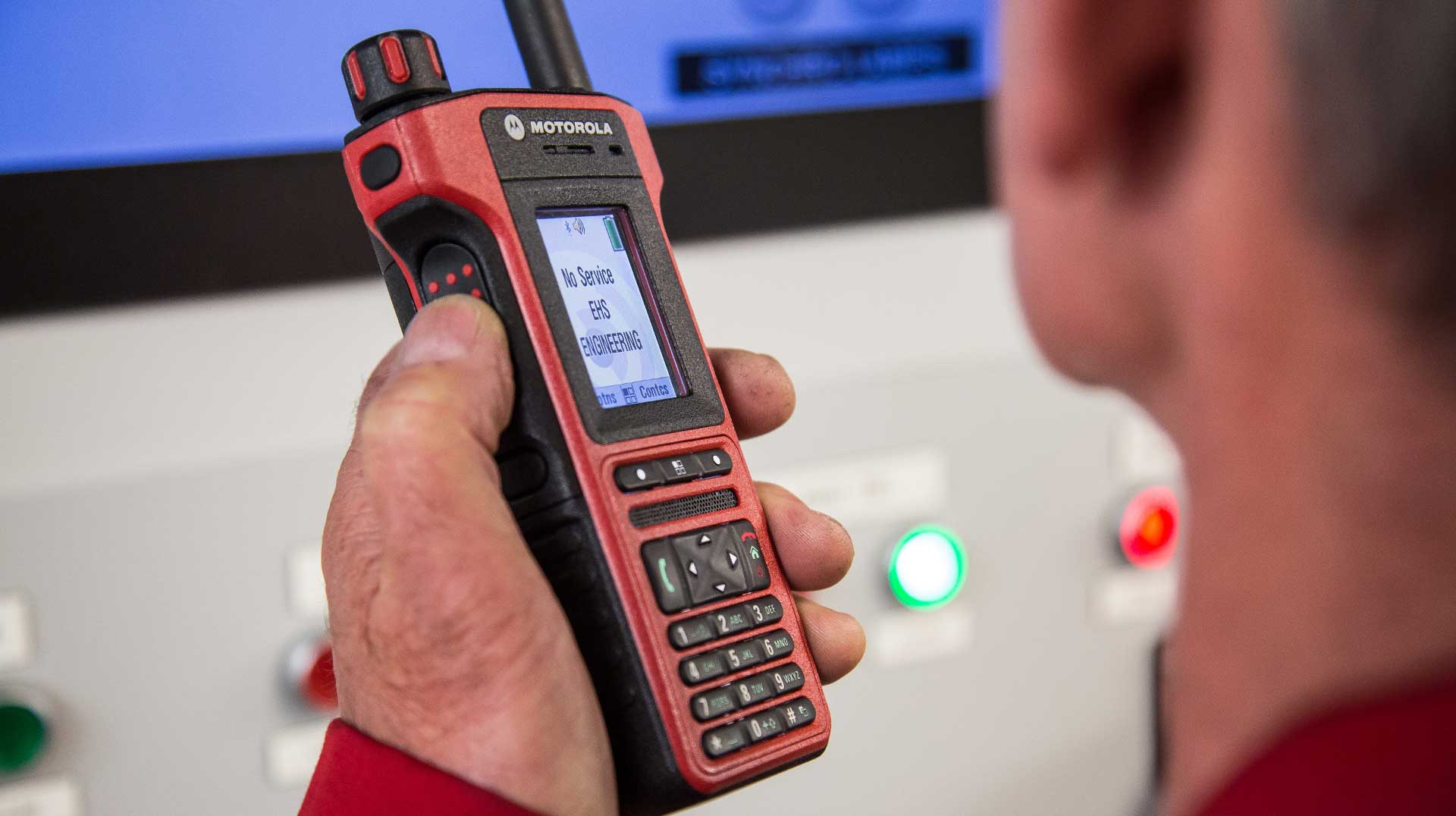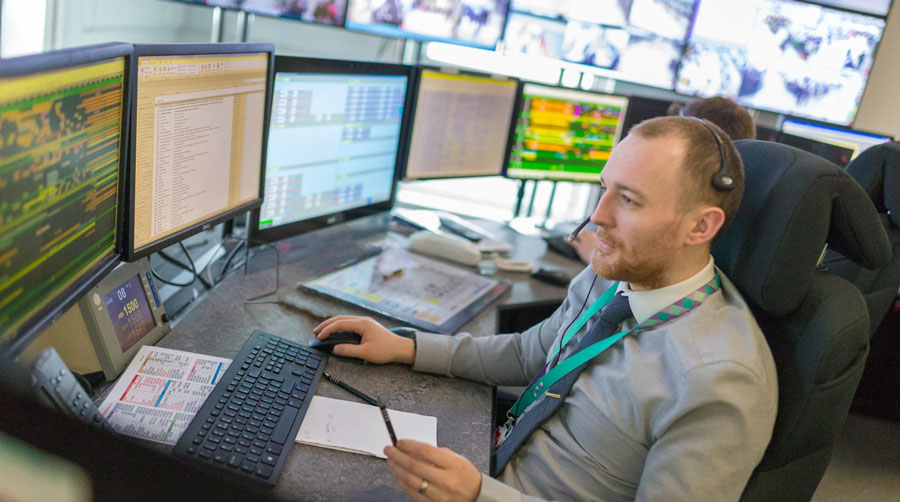Just as SVX serves as a partner for an officer, its accessories expand the overall user experience while streamlining daily duties – offering a comprehensive solution that seamlessly integrates into an officer’s workflow. To better understand how these objectives were incorporated in the design process, we spoke with The Son Hoang, the Industrial Designer behind SVX’s accessories, to learn more.
Hey Son! Before we get started, can you tell us a bit about how you found yourself at Motorola Solution doing industrial design?
It’s actually a crazy story — back when I was at college, I was robbed on campus. There were no cameras around to document the event, and so ever since then, public safety has been a significant concern for me. When I graduated from college, I was offered this job, and because of my past experience, I found myself truly believing in Motorola Solutions’ mission of ‘solving for safer‘. I find this work meaningful, as it’s not only something I have aptitude for but also something that brings value to people’s lives.
Is product design something you’ve always had a passion for?
I’ve known I wanted to get a career in industrial design since I was in junior high. Back then, I loved working with hardware and creating my own prototypes, and later in high school and college, my perception changed a little bit. Before, I wanted to make ‘cool’ things like PC hardware: computers, gaming mice, things like that. But since my time at college, I saw that industrial design can bring much greater value than just things that merely have amazing aesthetics. There are things that actually make human lives safer. So I would say that, yes, I have known that I want to go into this field for a while, but then college gave me more clarity on what I actually wanted to specialize in— products that are beneficial and useful to public safety.
As an RSM is an officer’s lifeline, it’s obviously important that the SVX battery lasts a whole shift. Can you tell me a bit more about how you prioritized battery life and charging when designing the SVX accessories?
On the charger devices, we wanted to ensure that the charging experience was as easy as possible for the officers. Aside from the extra SVX batteries that officers are able to swap in and out during their shifts as needed, we designed two charger devices. Firstly, there’s a Smart Dock which allows you to dock and charge the entire SVX device, while automatically offloading video footage to CommandCentral DEMS. The second option is a battery-only charger which allows you to charge the SVX batteries separately, allowing up to six batteries.
When designing the accessories, we understood that the battery is super important and so we wanted to make the charging process as intuitive as possible. Specifically, I wanted to ensure the officer was fully aware if the device was docked or not. We also wanted to design an LED indicator that was very easy to see and displayed colors clearly, because officers will be charging camera batteries in different environment settings with different levels of brightness. At the end of the day, we want to make sure our devices are easy to understand and use, simplifying an officer’s experience as much as possible.
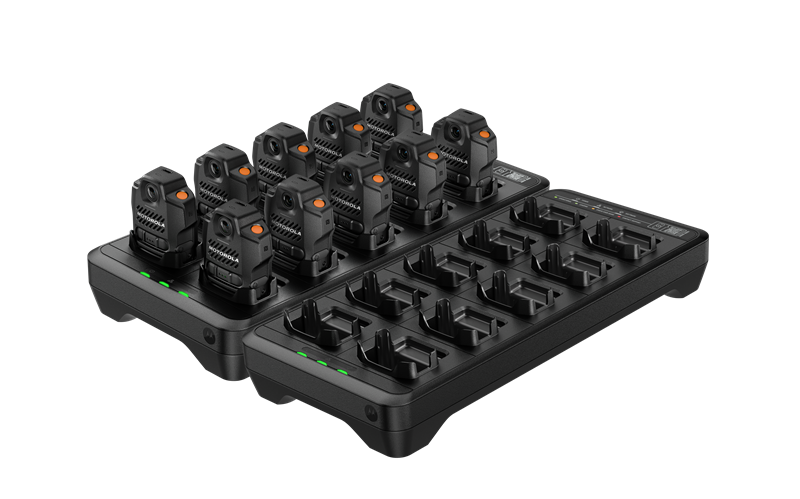
Each slot found on the Smart Dock charger is designed with intuitive guides that snugly fits the SVX, enabling another layer of certainty when charging.
Was user feedback something that influenced these designs?
Yes – we have a talented human factors team and a research team who performs tests with officers at countless on-site sessions to ensure all these accessories feel intuitive and are usable. For instance, with the earpiece, they tested the tactile feel of the button, making sure it was appropriately sized and that the click wasn’t too weak, too strong, or too sensitive. It might sound excessive, but we test each button dozens and dozens of times to ensure they meet our strict requirements on the field. In a situation where an officer is in a high-velocity scenario – they need to act quickly. We can’t afford to have a situation where they click but are left questioning whether or not the input was registered.
Can you describe a design challenge you faced with the accessories?
Due to the SVX’s advanced body housing shape, which is built to ensure robustness and performance in the field, the device presented us with a challenge when designing a charger cup that ensured fit and effectiveness. We wanted to create an experience where officers knew the SVX was properly charging when they docked the charging device, similar to a satisfying sound of closing a car door. As such, upon docking, the dock provides some tactile feedback and an error-proof mechanism to prevent jamming or damaging charging components. We understand the long shift nature of first responder work – we want to ensure at the end of the day they can rest assured that their SVX is charging properly.
How did you balance aesthetics and functionality in the SVX accessories?
The first aspect we focused on most was performance. Our accessories give officers tremendous flexibility in how and where they mount the SVX. We ensured that the accessories accommodate fast-paced, high-action cases. We made sure the buttons are tactile and large enough for them to press easily, so they won’t miss anything when communicating. Regarding aesthetics, while this is a first-of-its-kind device, it’s still within the Motorola Solutions portfolio, and as such, we wanted to ensure its aesthetic was consistent with our product family while simultaneously highlighting its uniqueness. Another important point about aesthetics is that we design for public safety. Therefore, we wanted it to feel rugged and strong, so the device is able to withstand various conditions and high-velocity scenarios.
SVX is compatible with both a standard earpiece and an earpiece which includes an inline microphone. Can you explain the different use-cases behind those accessories?
We designed the two earpieces after our research showed that there are tactical use-cases which require officers to position the camera lower on the body due to the location of other equipment. The single-wire earpiece is ideal for officers who wear their SVX higher on the body, allowing them to speak directly to the RSM while benefiting from clear and covert audio directly to their ear. The two-wire, a combined earpiece and microphone accessory with enhanced mic performance, is suited for officers who wear their SVX lower and prefer to speak directly into the earpiece.
Which design element of SVX accessories are you most proud of?
I’m most proud of the two-wire earpiece, which has amazing microphone performance via our newly-developed windporting patent. Our design team has collaborated closely with the engineering team to develop the form factor of the microphone caps, which not only reduce wind noise through our proprietary architecture, but also withstand harsh environment conditions and fit with the rest of our sleek design language. While it appears simple, it’s a testament to the collaborative innovation between the engineering and design teams. I am a true believer in the power of combined expertise. When diverse perspectives and specialized knowledge come together, we unlock unparalleled potential for innovation. This collaborative spirit is what truly drives progress at Motorola Solutions and allows us to bring groundbreaking ideas to life.
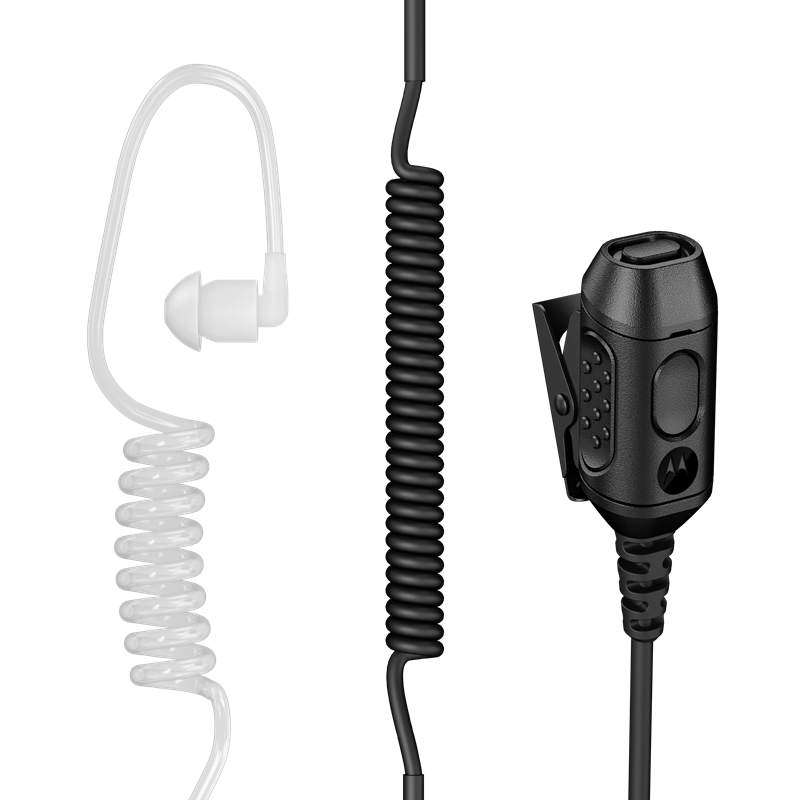
The two-wire earpiece’s minimalistic design offers not only uncompromising audio but provides an additional programmable button found on the microphone to further personalize an officer’s workflow.
What do you see for the future of body cameras and RSM accessories?
As AI advances, having voice and video converged in the same device offers immeasurable value. From an evidential perspective, an RSM alone can’t necessarily tell the whole story of what an officer is actually witnessing. The background sounds an officer might hear can hold different meanings in various scenarios, and we don’t always verbally describe everything we observe. On the other hand, relying solely on video recorded by body cameras may not capture crucial details like dispatcher notes or radio communications. With the SVX’s impressive audio and video clarity, it’s a game-changer for public safety in the AI age.

